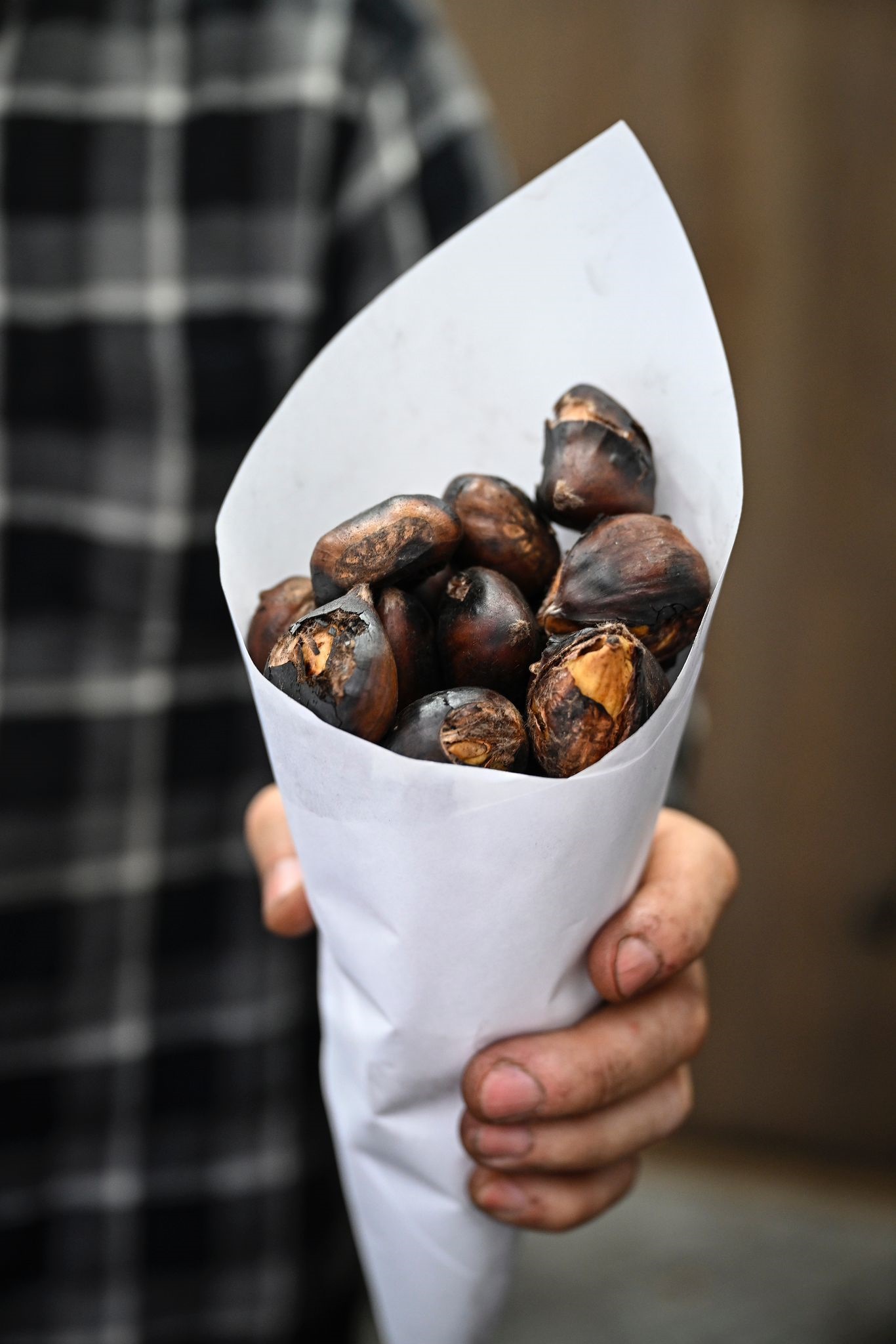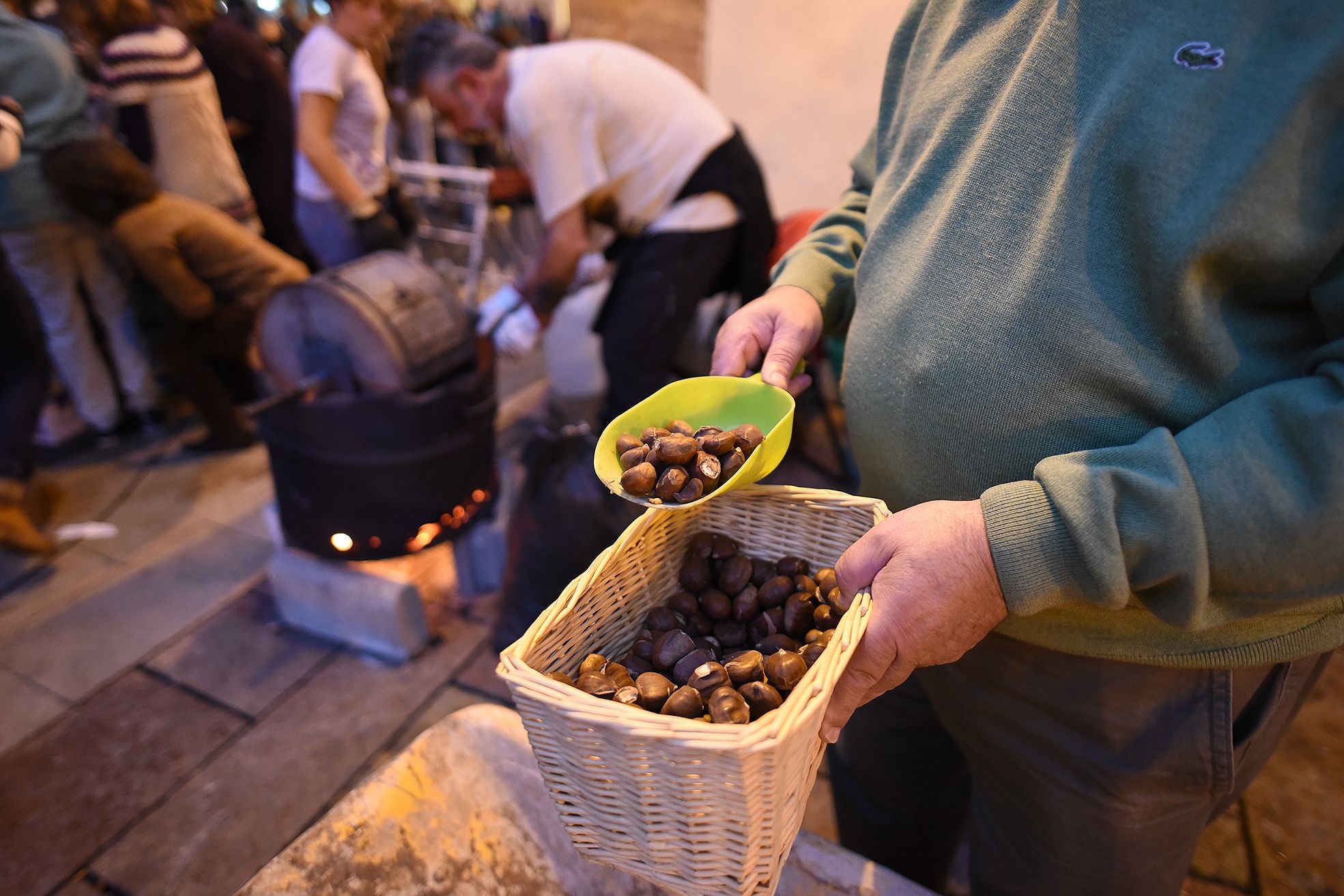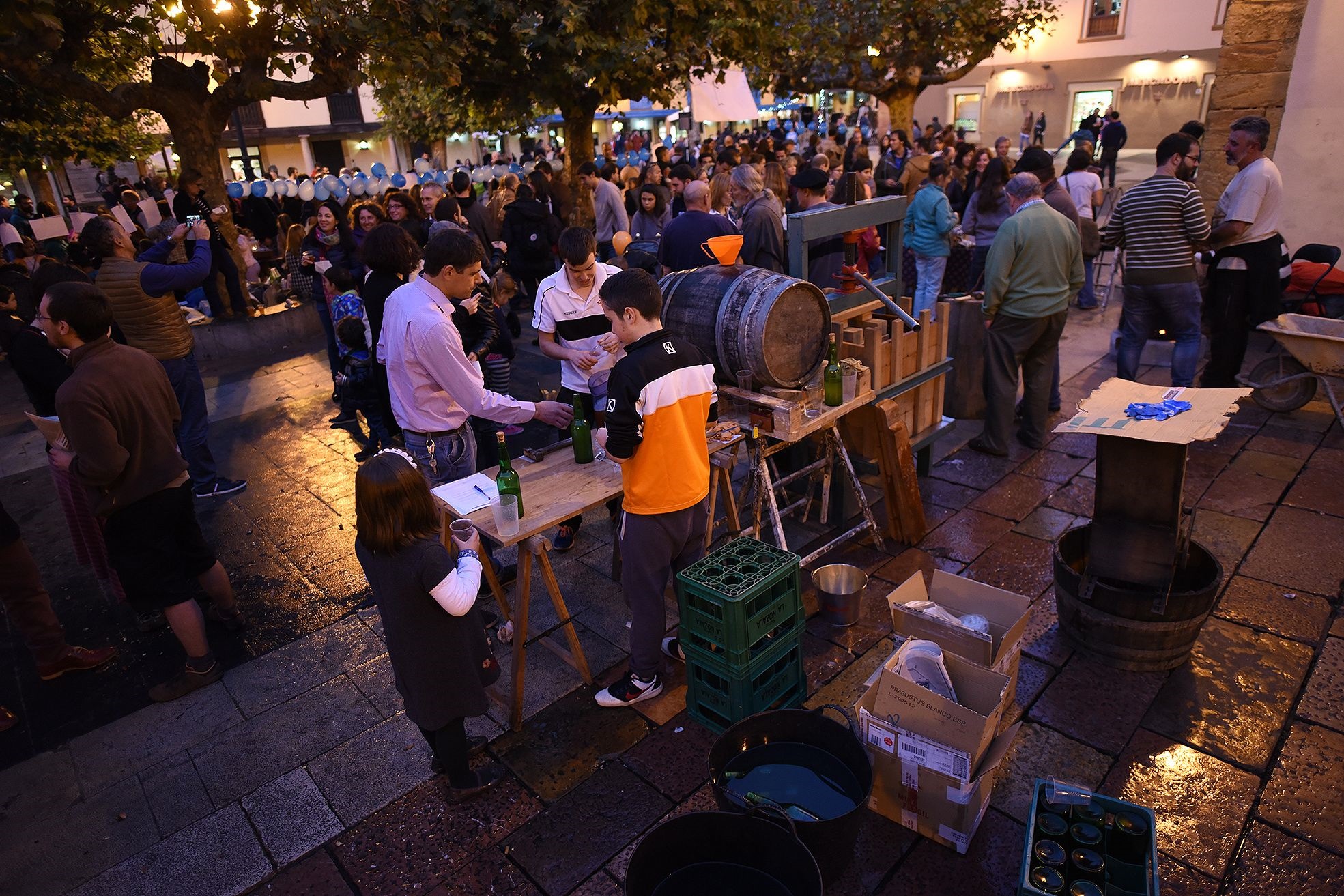Amagüestos
AMAGÜESTOS
Every autumn, between the end of October and the middle of November – although there are also occasional extensions – the “Amagüestu” festivities take place in Oviedo. These are celebrations of Celtic origin, in which chestnuts are the key element. The very word “Amagüestu” is translated from the Asturian as “roasting chestnuts” which is what is done at these outdoor celebrations, which are extremely popular among children. Chestnuts are served, or sold, in paper cones along with sweet cider and the festivity is usually accompanied by traditional music, dances and games.
The arrival of winter and the symbol of souls
The “Amagüestu” festival used to celebrate the onset of winter. This may surprise visitors since, in Oviedo, autumn usually brings good weather and special golden sunshine. The Celtic tradition ended, as in the case of other festivals, when it was absorbed into the Catholic religious sphere and joined the celebrations of the deceased at the beginning of November, to the point that chestnuts were distributed outside churches in the belief that for every chestnut that was eaten, a soul was saved. The season of roasted chestnuts extends well into winter. In Oviedo, there are still a few street stalls that sell chestnuts and some people still have the habit of putting some warm chestnuts in their pockets, more for sentimental reasons than to keep out the cold.
In squares and schools
The “Amagüestu” is usually held outdoors, in city squares and streets, and now, it is also popular in schools, especially among the younger students. For three decades, the Sociedad Protectora de La Balesquida (Balesquida Protection Society) has been recovering a traditional “amagüestu” in which, well into winter, around December, it distributes chestnuts and sweet cider among its members in a celebration with traditional music and games in Cathedral Square or neighbouring Porlier Square. However, there are also neighbourhood associations that are joining in the celebrations. In the city centre, we have the “Oviedo Redondo” celebration in Daoíz and Velarde Square, next to El Fontán, and in the neighbourhoods, we have the festival held in Conceyín Square, in La Corredoria, with a free tasting session. State schools and private schools in the municipality also organise their “amagüestu” festivities, which they usually combine with educational activities about Asturian traditions or activities involving the countryside and agriculture. The hospitality business has also joined in the celebration, with special days and dishes that include chestnuts, especially in desserts. In Oviedo, during the “amagüestu” of Gascona Street, the “Bulevar de la sidra” (Cider Boulevard), the establishments roast up to a ton of chestnuts that they then sell in paper cones together with a free glass of sweet cider.

Valduna: The best is from a neighbour
Chestnut production was once abundant in Asturias and it was a key component of the diet of the most popular classes given its high calorie value. Although production declined over time, it has been recovering for some years now, with the support, as in so many cases in the agriculture of Asturias, of research conducted by the Regional Service for Agro-Food Development (SERIDA). Although there are up to eleven protected varieties of native chestnuts, the most “famous” is Valduna. This variety of chestnut (large, excellent flavour, reddish exterior and glossy like varnish) takes its name from the parish of Valduna. It is in the neighbouring council of Las Regueras, where one of the many chestnut festivals organised in Asturias is held.

This cider is not poured from a height.
Cider is drunk at all Asturian celebrations and this is also the case during the "amagüestu", but, in this case, the cider does not need to be poured from a height. This is “sweet cider”. It is the juice that comes directly from the (crushed) apples after they are harvested in October and before it goes into the barrels to ferment. It has no alcohol and therefore is suitable for children It is also called “sidra del duernu” (cider from the duernu) which is the wooden container where apple juice is collected when the apples are crushed. It should be consumed very soon after it is made, no more than one or two days after production. It has a marked traditional quality.

